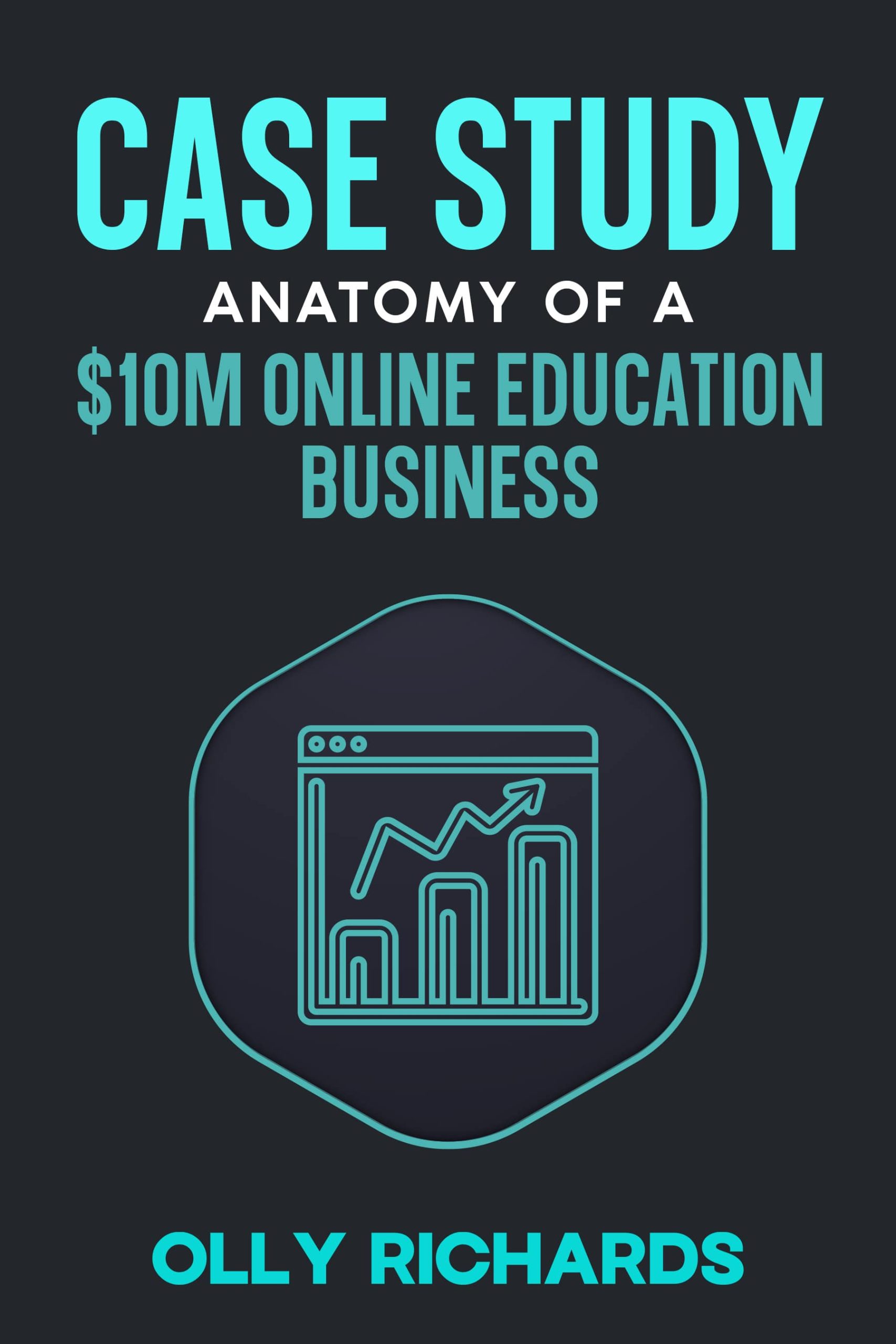Do you know what an entrepreneur does?
An entrepreneur makes decisions.
Lots of them.
Think back to your first couple of years in business – you were probably making 50 small decisions a day:
- Size of the font
- Price of the contract
- Opening line of your conference talk
- This freelancer or that
Getting your business off the ground involves 1,000s of tiny decisions, most of which you make on gut feel.

Gradually, things change.
You have a team. Things are automated. SOPs run the show.
Now, rather than small 50 decisions a day… it’s more like 5 big decisions a year!
- Cut a product line?
- Consultant or new hire?
- Build a new traffic source?
- Acquire a competitor?
…and the stakes are high!
Gut feel doesn't cut it any more.
But have you ever thought about how you actually make decisions?
Like… your process?
I hadn’t until recently.
But about 15 minutes ago in the shower, I realized – Damn, I’ve gotten really good at making decisions!
And so today, I’m going to talk you through how I make big decisions, in three steps.
I’ll also give you real examples of big decisions of my own.
This newsletter will make you a better decision-maker.
(Sidenote – Before reading this, I recommend you think of a decision you’re mulling over at the moment. Have it in mind as you read.)
How A Decision Gets Made

So, first things first.
With any big decision, the decision itself is the last thing you make.
Before you make the decision, there are two prior steps.
If you get the first two steps right, the eventual decision becomes easier. (Even obvious.)
Trouble is, most people jump straight to the decision, glossing right over parts 1-2.
And that’s when things go wrong.
Here’s the complete process I go through to make a big decision:
- Clarify the question
- Get all options on the table
- Devote thinking time
We’ll take these one-by-one.
1. Clarify The Question
What I’ve noticed about big decisions is that, often…
I wasn’t asking the right question in the first place!
I know this sounds weird, but often our questions are framed by other people – not by us.
Story time…
A few years back, I had decided that I wanted to “Scale, baby!”
- Every podcast was full of stories of businesses “scaling” to the moon
- Every business coach trying to pitch me would ask: “What’s your plan for scaling?”
- Every conversation with entrepreneur friends involved talk of “scale”
It’s only natural that I started to believe that “scale” was the only game in town.
I was gearing up to hire A-players… build a corporate sales team… run our margins down to the ground because “You gotta spend to scale, bro!”
It wasn’t until I had the good fortune of meeting a few early mentors that they put me in my place:
Mentor: “So Olly, what are your goals?”
Olly: “I want to scale to 8-figures!”
Mentor: “Why do you want to do that?”
Olly: “Er… isn’t that what you’re supposed to do?”
I’ll be eternally grateful for those chaps challenging me on this.
They told me war stories of other entrepreneurs who had “scaled”, and were miserable as a result – paying 75 pensions and carrying crippling office leases.
Turns out “scale” isn’t always a good thing.
Here’s the thing:
I was asking the wrong question.
The question I was blindly asking was: “How can I scale to 8-figures?”
Eventually, I realised the right question was: “How can I continue to grow my company…while maintaining the lifestyle and company culture I enjoy?”
If the monumental difference between these two questions isn’t clear to you… go back and read this again.
Getting clear on the question led to me making very different decisions.
Of course, we ended up “scaling” anyway.
We just did it more calmly, in a way that was authentic to me.
In fact, it was so successful that I ended up stepping back from the business almost entirely and working only 4-5 days a month…
Leaving me dangerously free to become better acquainted with local cider and the skies of Hobbitshire.
.
.
Side note: There’s a big lesson in this - when you grow your business on your terms, things tend to go much better.
.
.
The lesson here: Make damn sure you’re asking the right question.
2. Get All Options On The Table
Behold, one of my favorite quotes from recent years:
“There’s no decision to be made until you have at least three options on the table.”
Boom!
I could just end this section here…
Go home, crack open a brew and send you on your merry way.
Because the lesson here is as obvious as a vegan at a BBQ.
But hey, this newsletter ain’t gonna grow itself, so I’ll keep going.
(Although, on the subject of growing, if you know anyone who would appreciate this newsletter, then please hit “forward” and send it to them! I’m paying $6 per lead on twitter ads right now, so I’ll owe you 1/2 a pint at current London prices.)
Only kidding…
It’s the examples that help make this memorable anyway.
So, once you’re asking the right question (part 1), it’s imperative you uncover all options available to you.
It’s easy to just jump to the most familiar solution. But you’ve got to probe your blind spots.
Always assume you’re working with limited information, and ask as many smart people as you can.
For example…
We’ve been thinking about changing our sales tech stack recently at StoryLearning.
We have a bunch of limitations on the closed-loop software we use and need to build a more open-source stack that will play nice with third party software.
I’m not really a tech person, nor is anyone on the team. I mean, we get by, but it’s not our strong suit.
I asked for help in an entrepreneur group I’m in, and I was hit with a barrage of solutions I hadn’t even considered…
Everything ranging from:
- New software I’d never heard of
- Hiring a consultant CTO to manage the process
- Non-obvious platforms (that are actually great)
- And dire warnings about not doing it!
No idea how this is going to pan out, and truth be told, I’m nervous about this one.
But, whatever decision I make, I’ve got 3+ options on the table…
So now there’s a decision to be made!
The lesson here: Get comfortable asking for help.
3. Devote Thinking Time
So far, we’ve talked about:
- Clarify the Question
- Get All Options on the Table
So now it’s decision time.
Entrepreneurs are scatterbrained and have a million ideas a minute.
We value action over deliberation, and we’re not good at slowing down.
But when there’s a big decision to be made…
I’ve learned that you need to:
Slow things right down and create space for a good decision to be made.
This is actually really simple to do.
But if you’re anything like me, it’s bloody hard to get yourself to actually do it!
I’m talking about… wait for it…
Quiet thinking time!
If the very idea of sitting by yourself, lost in thought, has you breaking out in a cold sweat, then I can relate.
But I’ve discovered this to be the essential final part in making great decisions.
There are three ways I do this
1. Morning Walks
I walk for an hour every morning up around the local hills of Hobbitshire.
(I post pictures of my routes on Instagram.)
I literally pull on my hiking boots at 06:20, step out the door and set myself a clear thinking task:
“Right, Olly, here’s your thinking task for the next hour.”
I leave my phone at home (super important), head up into the hills and simply focus my attention on the solution for the whole hour.
2. Quiet Thinking Time
This is a technique I adopted after reading the fantastic book The Road Less Stupid.
Not to trivialise the book, but the basic premise is that you literally just:
Plunk yourself down in a chair and think!
You set a timer (e.g.45 minutes) and set a specific thinking task.
I know this may sound silly, but like I said before, the big problem for entrepreneurs is quietening down your mind for long enough to actually let a thought pass through it that’s deeper than a puddle in the Sahara.
3. Pen To Paper
Last, is writing.
There are many kinds of writing, but “journaling” will serve as a useful umbrella word.
You know what I’m talking about – free-form journaling, first thing in the morning
Crank out a notebook and just start writing, stream-of-consciousness style.
Write about the problem you’re facing, whatever comes into your head. Don’t edit, just talk the problem through on paper.
Journalling is an amazing way to clarify your thoughts, because the writing process forces you to bring order and structure to your ideas.
.
.
Of all three…
My personal favourite is walking.
There’s something about the movement involved in walking that helps me connect with decisions in a more embodied way.
For example…
Last year, I was wrestling with a growth dilemma. I wanted to upgrade our marketing capacity, and was debating whether to bring in external people or up-skill the existing team.
I’d carefully been through the process of clarifying the question and getting three good options on the table.
After five days of “walking” with this dilemma, I made a firm decision: Up-skill the team.
Why?
Even though this flew in the face of a lot of the advice I was getting about hiring A-Players etc (yawn), the walking helped me rebalance the “intellectual” with the “energetic”. I felt that the energy, culture and ambition of the team were best served by giving them the chance to step up.
I knew it would mean slower progress.
But I didn’t care.
It was the right decision for me – for us.
You’ve got to buy into the solution with your whole being. That’s how you stick at it and see it through when times are tough.
I only made this decision after creating the space to properly think it through…
And I have yet to encounter a problem that can’t be solved after five straight days of walking.
The lesson here: Big decisions can’t be made in a rush. Create the time and space needed to weigh up the decision from every angle.
Conclusion
So that’s the process in a nutshell.
First, I clarify the question I’m asking.
Second, I get all options on the table.
Third, I carve out dedicated thinking time to make the decision.
Obviously it’s never quite as clean and simple as I made it out to be here.
But, the closer I stick to the process, the better decisions I make.
Like my decision on scaling…
Boy am I pleased I got that one right!
How about you?
Did you make any headway with your decision that I asked you to think about while reading this?
If so, hit me up and tell me about it.
(I love reading replies.)
Anyway…
That’s all for this week.
Namaste,
Olly
CASE STUDY: Blueprint Of A $10m Online Education Business:
Join my free newsletter for online educators and I'll send you the case study immediately...
We will protect your data in accordance with our data policy!

